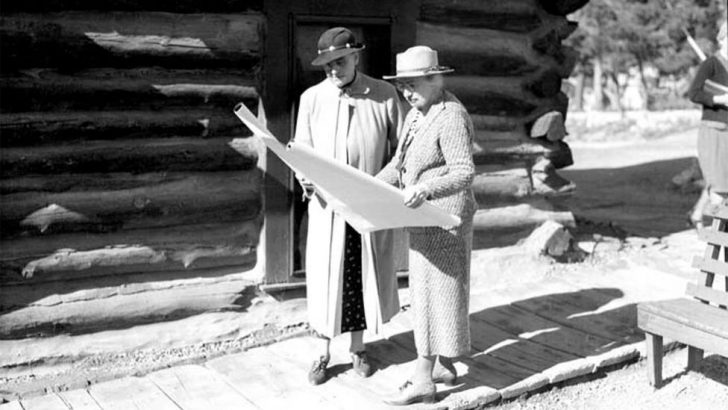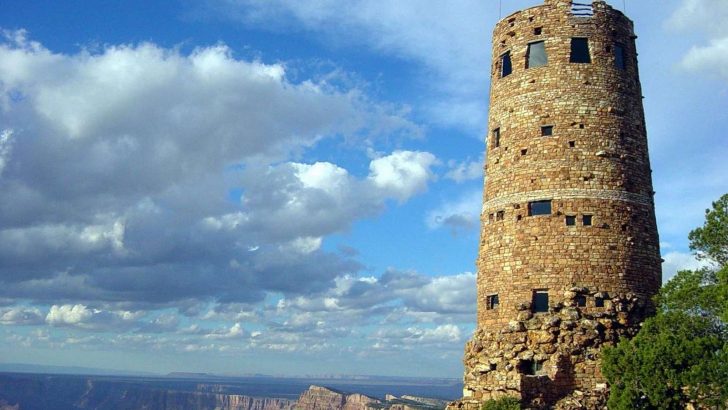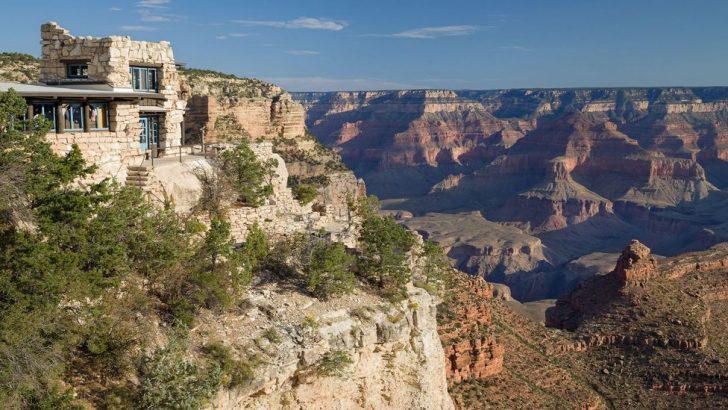Born in Pittsburgh, Pennsylvania, in 1869, Mary Elizabeth Jane Colter's family moved to Texas and then Minnesota during her childhood. It was in Minneapolis where Colter's interest in architecture and design began to flourish.
Drawing inspiration from her surroundings and the rich tapestry of American culture, Colter embarked on a journey that would make her an iconic figure in Southwest architectural history.
Distinctive Architectural Style
As an architect and designer for the Fred Harvey Company, Mary Colter was instrumental in the design and interior decoration of several landmark structures within the U.S. Southwest. However, it was not just the buildings she designed. But the meticulous attention to the narrative and context set her work apart.

GTN / Mary Colter was one of the few women to study at the California School of Design in San Francisco during the late 19th century.
-
La Posada Hotel
Located in Winslow, Arizona, this hotel combined Spanish Colonial and Mission Revival styles. Its luxurious interiors were reminiscent of grand haciendas, reflecting a bygone era of Spanish aristocracy.
-
The Desert View Watchtower
One of her most iconic works, this tower stands on the South Rim of the Grand Canyon.
Drawing inspiration from the ancestral Puebloan towers, it is both a marvel of modern architecture and a homage to Native American heritage.
-
Hopi House
Located near the El Tovar Hotel at the Grand Canyon, Hopi House was not just an architectural project but also an anthropological one.
Colter designed it to resemble a traditional Hopi dwelling. Thus, showcasing Native American arts and crafts.

Elle / The Desert View Watchtower is one of the iconic works of Mary Colter.
-
Bright Angel Lodge
Another masterpiece at the Grand Canyon, this lodge reflects Colter's unique ability to blend natural materials with indigenous motifs, ensuring that the structure complements its stunning environment.
-
The Harvey House
These establishments, built at train stations across the Southwest, provided quality food and lodgings to travelers. Colter's designs for these venues became the benchmark for integrating local culture into architecture, creating a unique experience for visitors.
Transforming Perspectives
Mary Colter's approach was revolutionary for her time. While many architects of the era leaned towards popular European styles, Colter chose authenticity over convention. She studied local indigenous cultures, their art, and their building techniques. Her designs were not mere structures. Instead, they told stories, they embodied the spirit of the Southwest.

US Sun / Mary Colter’s craftsmanship is the specimen of a legendary architect.
She was an advocate for the preservation of Native American arts and crafts, often employing local artisans to craft the interiors of her buildings. This not only ensured genuine craftsmanship. But also supported local communities, bridging the gap between modern infrastructural developments and traditional cultures.
Thus, Colter’s dedication to authenticity led her to use native materials in her buildings. Whether it was the stone for her structures or the timber for the roofs, sourcing locally was not just a design choice, but an ode to the very land on which the building stood.
Legacy of a Pioneer
Despite facing challenges in a male-dominated profession, Mary Colter etched her mark on the architectural world. Her buildings, while distinct in design, share a common thread – they speak of the land, the people, and the cultures of the U.S. Southwest.
Over time, as newer designs and structures began to overshadow traditional architectural styles, many of Colter's buildings faced threats of demolition or neglect.